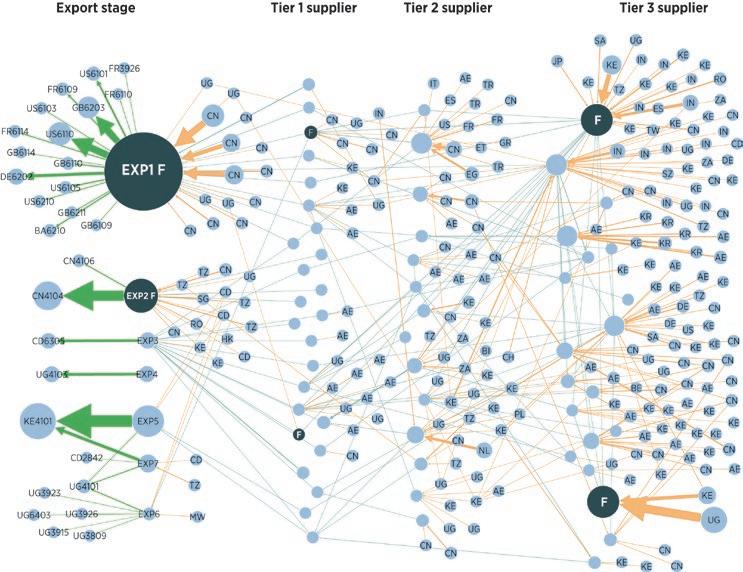
1 minute read
leather value chain
BOX 4.5 The importance of global value chain segment mapping in shaping a sector-based strategy (continued)
FIGURE B4.5.2 Firm-level mapping of Rwanda’s textiles, apparel, and leather value chain
Source: World Bank calculations based on firm-to-firm value added tax data; see chapter 11 of this report. Notes: Exports are denoted with green arrows; orange arrows represent imports. Each node represents a firm. Foreign-owned firms are dark blue, and domestic firms are light blue. The thickness of the edges between the nodes is proportional to the transaction amount between the two respective firms, and the size of each node represents the node’s weighted degree in the network.
drivers for GVCs’ production inputs and their implications for market and government failures (see figure 4.8, which provides some examples for illustrative purposes). One GVC segment may have multiple characteristics that would require more than one approach (for example, the characteristics of electronics GVCs lend themselves well to both targeted investment promotion and facilitation of strategic alliances).
Strengthening MNC-supplier linkages can be especially effective at boosting GVCs that are simple and require inputs that can be supplied at arm’s length but that also need to meet stringent requirements set by global lead firms. Such GVCs include


